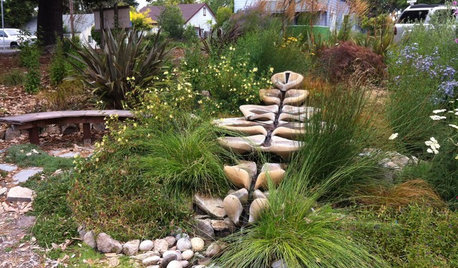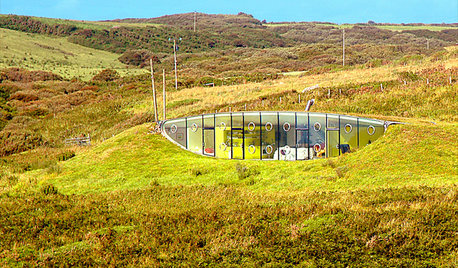Disappearing Water
wthalin
9 years ago
Related Stories

DECORATING GUIDESTGIR: The Case of the Disappearing TV
They Got It Right: If you can’t beat it, camouflage it. See how these designers made TV screens almost unnoticeable
Full Story
THE ART OF ARCHITECTUREDesign Workshop: The ‘Disappearing’ Guardrail
Putting the focus on the view instead of the rail on a porch or balcony is sometimes clearly the best option
Full Story
LANDSCAPE DESIGNGet Along With Less Lawn — Ideas to Save Water and Effort
Ditch the mower and lower your water bill while creating a feast for the eyes with diverse plantings and gathering places
Full Story
HOUSEKEEPINGHow to Remove Water Rings From Wood Tables
You may be surprised by some of these ideas for removing cloudy white water marks from wood surfaces
Full Story
GREEN BUILDINGJust Add Water: Rain Barrel Magic
Take your rainwater storage from practical to beautiful with a new breed of design-friendly rain barrels
Full Story
LANDSCAPE DESIGNNew Ways to Design With Water
Go beyond 3-tiered fountains and faux waterfalls to discover water's architectural possibilities
Full Story
BATHROOM DESIGNWater Damage Spawns a Space-Saving Bathroom Remodel
A game of inches saved this small New York City bathroom from becoming too cramped and limited
Full Story
ARCHITECTURE6 Amazing Homes Dug Into the Earth
Designed to disappear or with portions peeking out, these houses bring a new meaning to 'communing with nature'
Full Story
BATHROOM DESIGNDream Spaces: 14 Fabulous Indoor-Outdoor Bathrooms
Disappearing walls put these baths in Mother Nature’s lap, counting tranquil views and fresh air as the best luxuries of all
Full Story
GARDENING AND LANDSCAPINGSliding Walls Bring the Outside In
Disappearing walls erase the line between you and the view
Full Story






darla84
wthalinOriginal Author
Related Professionals
Forest Acres Landscape Architects & Landscape Designers · Quincy Landscape Architects & Landscape Designers · Mooresville Landscape Contractors · Surprise Landscape Contractors · Camp Verde Landscape Contractors · Commack Landscape Contractors · Downey Landscape Contractors · Fort Myers Landscape Contractors · Laguna Hills Landscape Contractors · New Providence Landscape Contractors · Pacifica Landscape Contractors · Shirley Landscape Contractors · View Park-Windsor Hills Landscape Contractors · Westchester Landscape Contractors · Maplewood Landscape ContractorsHolly_ON
wthalinOriginal Author
waterbug_guy
cliff_and_joann
wthalinOriginal Author
cliff_and_joann